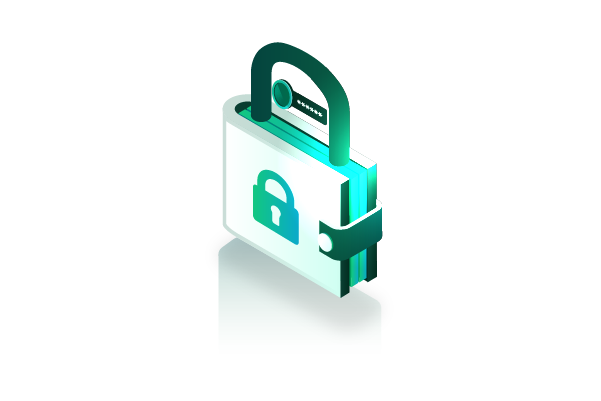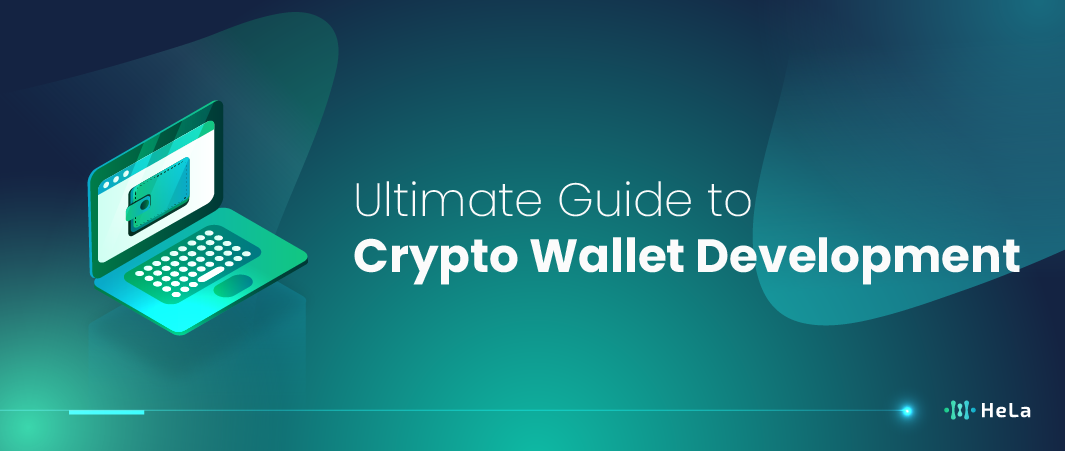In an era where cryptocurrency is gaining massive traction, having a secure and efficient crypto wallet is imperative for users and developers alike. This guide delves into the fundamentals of crypto wallet development, offering a deep dive into the technologies and strategies essential for crafting a robust digital wallet. From understanding the basic architecture to implementing advanced security measures, we will explore all the key facets that contribute to successful crypto wallet development.
As cryptocurrencies continue to evolve, the demand for more sophisticated and secure wallets is on the rise. This article serves as a comprehensive resource for developers looking to enter or enhance their skills in the crypto wallet development space. We will discuss various types of wallets, their advantages, and their potential vulnerabilities.
Embarking on the journey of developing a crypto wallet can be daunting. However, with the right knowledge and tools, it becomes an achievable task. This guide aims to equip you with the necessary insights and best practices to navigate the complex landscape of crypto wallet development, ensuring you build a wallet that is not only functional but also secures the digital assets of its users effectively.
What is Crypto Wallets?

Crypto wallet is crucial for anyone engaging with cryptocurrencies. They function not by storing actual currency but by securing cryptographic keys necessary for accessing and transacting with your cryptocurrency. Here’s an in-depth look at the main types of crypto wallets: software, hardware, and paper, along with insights into hybrid storage solutions.
Software Wallets
Software wallets, commonly referred to as hot wallets, are accessible through software applications installed on computers or mobile devices. These wallets are connected to the internet, providing easy and quick access to cryptocurrencies, which is ideal for frequent trading and transactions. Despite their convenience, the internet connection does pose security risks, such as vulnerability to malware, phishing attacks, and other forms of cyber theft.
Types of Software Wallets:
- Desktop Wallets: Installed on a personal computer, they offer robust security unless the computer is compromised.
- Mobile Wallets: Run on mobile devices, providing convenience and enhanced features like QR code scanning.
- Web Wallets: Operated through web browsers, allowing access from virtually any device but are the least secure type.
Hardware Wallets
Hardware wallets are dedicated devices designed to store cryptocurrency offline, shielding them from online threats. These wallets resemble USB sticks but are built with specialized security measures to safeguard your assets. They are ideal for long-term investors or anyone prioritizing security over convenience.
Features of Hardware Wallets:
- Offline Storage: Reduces the risk of hacking since the device is not connected to the internet.
- Physical Security: Often equipped with buttons to physically confirm transactions, preventing remote theft.
- Recovery Features: Typically include recovery phrases to restore access to cryptocurrencies in case the device is lost or damaged.
Paper Wallets
A paper wallet is the simplest form of a cold wallet. It involves printing or handwriting the cryptocurrency’s public and private keys on paper. This method eliminates digital risks like hacking and software failures, but it requires careful handling to prevent physical damage or loss.
Considerations for Using Paper Wallets:
- Security: Must be stored in a safe, possibly fireproof and waterproof environment.
- Convenience: Transactions require manual input of keys or scanning QR codes, which can be cumbersome.
- Impermanence: Susceptible to aging and wear; copies should be made and stored securely.
Also Read: What Is Crypto Fear Index?
Hybrid Approaches
To balance security and convenience, some users adopt a hybrid strategy. They use a combination of wallet types to optimize their workflow and security measures. For instance, large sums can be stored in hardware wallets for long-term security, while smaller amounts are kept in software wallets for everyday use.
Advantages of Hybrid Wallets:
- Flexibility: Allows users to manage funds actively without exposing their entire portfolio to potential online threats.
- Efficiency: Enables quick transactions when needed, while maintaining robust security for the bulk of assets.
By understanding the characteristics and technologies behind each type of crypto wallet, users can make more informed decisions tailored to their needs and risk tolerance, leading to better management and security of their digital assets.
Key Considerations in Crypto Wallet Development

Developing a secure and user-friendly crypto wallet involves several key considerations that are essential for both developers and users. Here’s a detailed look at the most important factors:
1. Security
The most critical consideration is ensuring the wallet’s security. Crypto wallets store users’ private keys, which grant access to their funds. If these keys are compromised, users can lose all their assets. Developers need to implement encryption techniques, secure key management, and multi-factor authentication (MFA) to protect wallets from hacking attempts. Regular updates to patch vulnerabilities are also essential. Hardware wallets are often considered the most secure as they keep private keys offline, making them harder to access remotely.
2. User Experience (UX)
Many users of cryptocurrency wallets may not be tech-savvy, so a smooth and intuitive user experience is crucial. Wallets need to have clear, easy-to-navigate interfaces to attract and retain users. Features like easy wallet setup, transaction history tracking, QR code scanning, and simple wallet address management make it easier for users to handle their digital assets. An efficient and responsive design ensures that users can access and manage their funds effortlessly.
3. Cross-Platform Compatibility
To reach a broad audience, crypto wallets must function seamlessly across different devices and platforms—whether it’s mobile, desktop, or hardware. Cross-platform compatibility ensures users can access their wallets from any device without loss of functionality or security. Additionally, wallets should be able to integrate with a variety of operating systems like iOS, Android, Windows, and Linux.
4. Scalability
As the number of wallet users increases, developers must ensure that the infrastructure is scalable to handle a growing volume of transactions. High transaction volumes should not lead to delays or a decrease in performance. Scalable infrastructure means faster processing times and more efficient use of resources, making the wallet capable of handling growth without crashing or lagging.
5. Regulatory Compliance
In many regions, crypto wallets must adhere to regulatory standards such as Know Your Customer (KYC) and Anti-Money Laundering (AML) requirements. These regulations are in place to prevent illegal activities like money laundering. Developers need to implement KYC processes and ensure that their wallets comply with all local and international legal frameworks. Failing to comply could result in legal penalties and loss of user trust.
6. Integration Capabilities
With the rise of decentralized finance (DeFi), NFTs, and staking services, users want more than just basic wallet functions. Modern wallets should offer integration with a range of services and assets. This includes supporting various cryptocurrencies and tokens, as well as connecting to decentralized applications (dApps), NFT marketplaces, and other financial tools. The more versatile the wallet, the more appealing it is to users.
Security Measures for Crypto Wallet Development

When developing a cryptocurrency wallet, implementing robust security measures is crucial to safeguard users’ assets against cyber threats and unauthorized access. Here’s an expanded outline of the critical security practices that should be considered:
Encryption Techniques
Encryption is the first line of defense in protecting the data within a crypto wallet.
- Data-at-rest encryption: Ensures that all wallet data stored on a device or server is encrypted, making it unreadable without the decryption key.
- Data-in-transit encryption: Utilizes protocols like TLS to secure data being transmitted over the internet.
- End-to-end encryption: Ensures that data is encrypted from the point of origin to the point of destination, preventing interception or tampering.
Multi-Factor Authentication (MFA)
Multi-factor authentication significantly enhances the security of a crypto wallet by requiring multiple forms of verification.
- Types of authentication factors: Something you know (password, PIN), something you have (mobile device, hardware token), and something you are (biometrics).
- Implementation strategies: Recommendations for implementing MFA in a user-friendly yet secure manner.
Private Key Management
The management of private keys is critical, as they are the ultimate access keys to the cryptocurrency stored in the wallet.
- Secure storage solutions: Using hardware security modules (HSMs) or secure enclaves to store private keys securely.
- Key generation and recovery: Best practices for generating private keys securely and providing secure, user-friendly key recovery options.
Regular Security Audits and Compliance
Conducting regular security audits and ensuring compliance with the latest security standards and regulations.
- Security audit protocols: How to conduct comprehensive security audits, including penetration testing and vulnerability assessments.
- Compliance with standards: Adherence to standards such as ISO/IEC 27001 and regulations like GDPR for data protection.
Advanced Security Features
Implementing advanced security features can provide additional layers of protection.
- Anomaly detection: Using AI and machine learning to detect unusual patterns that may indicate fraudulent activity.
- Decentralized security practices: Advantages of using decentralized technologies such as blockchain to enhance security through transparency and reduced attack vectors.
By incorporating these security measures, developers can create a crypto wallet that not only meets the functional needs of users but also provides the high level of security required in the cryptocurrency ecosystem.
Blockchain Integration and Network Considerations

Integrating a digital wallet with various blockchains involves several key considerations that are crucial for ensuring efficient operations and user satisfaction. Here’s a deeper look at some of the main aspects:
Choosing the Right Blockchain
The choice of blockchain technology impacts the wallet’s performance, security, and compatibility. Factors to consider include:
- Transaction Speed and Throughput: Different blockchains offer varying speeds and transaction capacities. For instance, Bitcoin processes about 4-5 transactions per second, while newer blockchains like Solana can handle tens of thousands.
- Consensus Mechanism: The consensus method (e.g., Proof of Work, Proof of Stake, Delegated Proof of Stake) affects security, decentralization, and scalability. Each has trade-offs concerning energy consumption, transaction speed, and resistance to attacks.
- Security Features: Security is paramount in blockchain choice. It includes considerations about the underlying architecture, cryptographic methods, and history of security breaches or successful defenses against attacks.
Wallet Integration Challenges
Integrating a wallet with multiple blockchains poses several challenges:
- Multi-Chain Compatibility: Ensuring the wallet supports multiple blockchains without compromising on performance or security. This might require implementing various APIs and maintaining updates with blockchain forks or upgrades.
- User Interface and Experience: A wallet’s interface must be user-friendly, providing a seamless experience across different blockchains. This includes intuitive navigation and clear information about transaction costs and wait times.
Also Read: 15 Best Crypto Staking Platforms in 2024 (Updated List)
Network Considerations
When integrating a wallet, network considerations are crucial for performance and cost-effectiveness:
- Transaction Fees: Different blockchains have different fee structures, which can fluctuate based on network congestion. Wallets need a dynamic fee estimation tool to help users minimize costs while ensuring timely transaction confirmations.
- Scalability: As the number of users grows, the wallet must handle increased transactions without lag or failures. This involves not only technical solutions on the client side but also choosing blockchains known for their scalability.
- Interoperability: With the rise of decentralized finance (DeFi) and cross-chain interactions, wallets must be able to interact across blockchains seamlessly. This might involve integrating with blockchain bridges or layer-2 solutions.
Future-Proofing
Blockchain technology is rapidly evolving. A wallet needs to be designed with adaptability in mind, ready to integrate new features, blockchains, and technologies as they emerge. This could include support for smart contracts, token staking, and newer consensus mechanisms that may be developed.
By addressing these integration and network considerations, developers can create a wallet that not only meets current demands but is also prepared for future blockchain developments and challenges. This comprehensive approach ensures that the wallet remains robust, secure, and user-friendly in a dynamic and evolving market.
Crypto Wallet Development: Testing and Deployment

When developing and deploying a digital wallet application, ensuring its reliability and performance is paramount. The process involves rigorous testing phases to identify and rectify any potential issues before deployment, followed by strategies for maintaining performance post-launch. Here’s a detailed breakdown of the key stages:
1. Unit Testing
Unit testing is the first line of defense in ensuring that individual components or functions of the digital wallet work as intended. In this phase, developers write tests for discrete units of code to verify that each part functions correctly in isolation. This helps in identifying bugs at an early stage, which can be simpler and less costly to fix.
2. Integration Testing
Once unit tests pass, integration testing begins. This phase tests how different modules of the wallet application interact with each other. It’s crucial because, although individual units may work flawlessly on their own, issues often arise when they’re combined. Integration testing helps ensure that data flows correctly between various components of the application, such as between the user interface, payment processing modules, and the backend database.
3. Stress Testing
Stress testing, or load testing, is vital for evaluating how the wallet performs under extreme conditions. This involves simulating a high number of simultaneous users or transactions to understand how the system handles heavy loads. This testing helps in identifying the breaking points of the application and the potential for performance degradation under stress.
4. Deployment Process
Deploying a digital wallet involves several key steps:
- Environment Setup: Ensuring the production environment is configured correctly for hosting the wallet.
- Release Planning: Scheduling the deployment to minimize impact on existing users.
- Data Migration: If necessary, migrating data from old systems to the new wallet platform without data loss or corruption.
- Monitoring: Setting up monitoring tools to continuously check the system’s health post-deployment.
5. Post-launch Support
After deployment, ongoing support and maintenance are critical. This includes:
- Monitoring for Issues: Using monitoring tools to detect and resolve issues before they affect users.
- Performance Optimization: Continually optimizing the application to handle more transactions smoothly as the user base grows.
- Security Updates: Regularly updating the software to patch any security vulnerabilities.
- User Support: Providing a helpdesk or support team to assist users with any issues they might encounter.
6. User Feedback and Iteration
Collecting user feedback after the launch is invaluable. This feedback can guide further development, highlighting features that users find useful or areas where the user experience can be improved.
Ensuring the reliability and performance of a digital wallet through these testing and deployment phases is essential for gaining user trust and achieving a successful digital payment solution.
Conclusion
As we have explored throughout this guide, crypto wallet development is a multifaceted discipline that requires a keen understanding of both technical and security aspects. By adhering to the best practices and innovative techniques discussed, developers can create wallets that not only meet but exceed the modern user’s expectations for security and functionality.
The future of crypto wallet development is promising and is poised to evolve as the technology surrounding cryptocurrencies matures. As a developer, staying updated with the latest trends and technological advancements is crucial in order to continue delivering solutions that address user needs and enhance the overall security of digital assets.
Lastly, the journey of creating a successful crypto wallet is continuous. It involves constant learning, adapting, and innovating. By maintaining a user-centric approach and prioritizing security, developers can contribute significantly to the broader adoption of cryptocurrencies and the success of the digital economy.
Disclaimer: The information provided by HeLa Labs in this article is intended for general informational purposes and does not reflect the company’s opinion. It is not intended as investment advice or recommendations. Readers are strongly advised to conduct their own thorough research and consult with a qualified financial advisor before making any financial decisions.

Joshua Soriano
I am a writer specializing in decentralized systems, digital assets, and Web3 innovation. I develop research-driven explainers, case studies, and thought leadership that connect blockchain infrastructure, smart contract design, and tokenization models to real-world outcomes.
My work focuses on translating complex technical concepts into clear, actionable narratives for builders, businesses, and investors, highlighting transparency, security, and operational efficiency. Each piece blends primary-source research, protocol documentation, and practitioner insights to surface what matters for adoption and risk reduction, helping teams make informed decisions with precise, accessible content.
- Joshua Soriano#molongui-disabled-link
- Joshua Soriano#molongui-disabled-link
- Joshua Soriano#molongui-disabled-link
- Joshua Soriano#molongui-disabled-link

